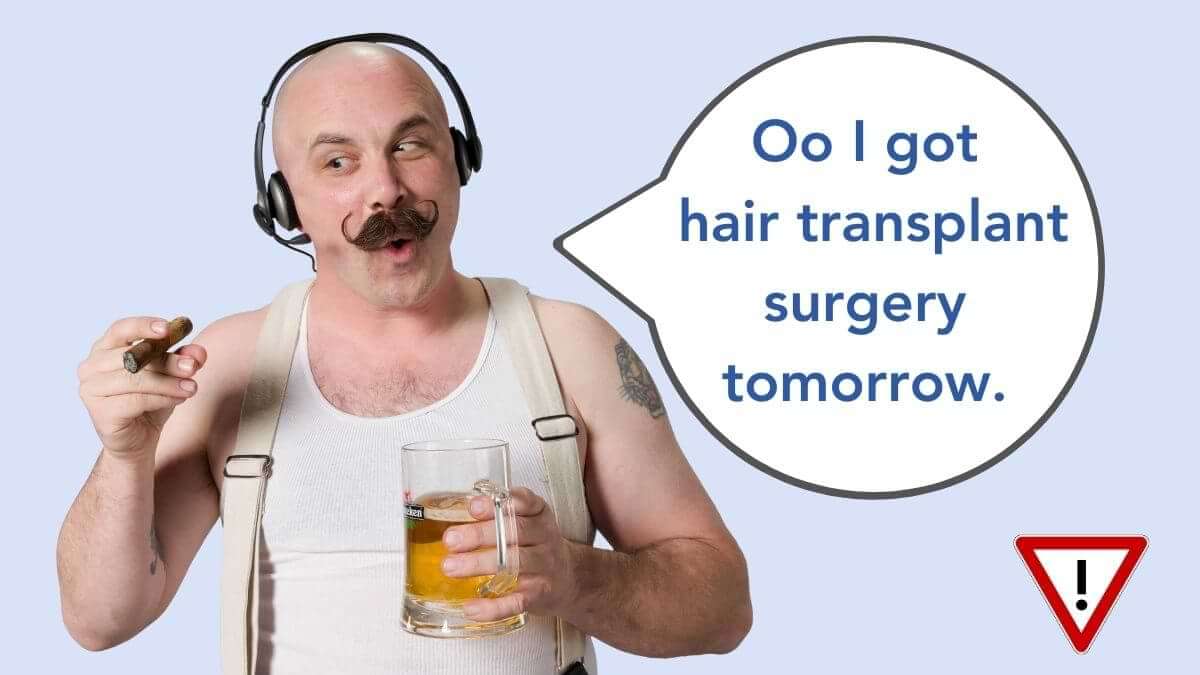So you’ve decided on getting a hair transplant surgery.
And a better future with shining hair is just around the corner.
But are you truly prepared for what comes next?
Unfortunately, deciding and going for the surgery after jumping on a flight to Turkey is relatively the easy part.
I’m not trying to discourage you. I’m a medical doctor first, a hair clinic physician second, so I need to tell you the truth.
👉 And the truth is the most successful hair transplant journeys start with the pre-hair transplant preparations that begin long before the surgery.
In this article, I’ll cover all the vital points to look out for, search and prepare for to maximize your hair transplant success rate.
Table of Contents
Before delving any deeper, you should first understand which habits in your life might be the reason you are getting a hair transplant in the first place and which to change:
Your daily routines will need to change, just like your hair.
Don’t forget! Stress can be both mental and physical.
💡 Did you know that Male Pattern Baldness is the primary cause of 95% of all hair loss in men?
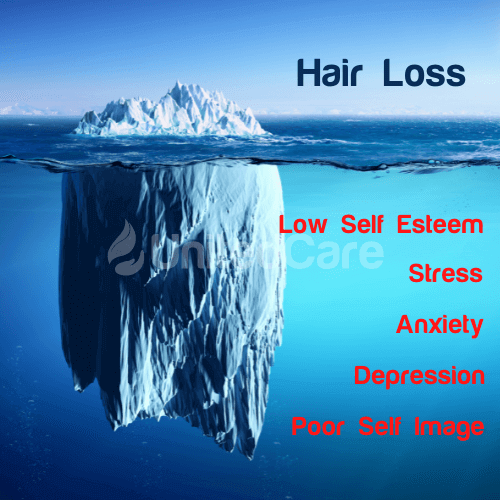
MPB, before anything else, is a genetic condition, which is why we call it androgenetic alopecia.
However, despite what your genetics do to you, you still have the chance to fight back.
And the secret to that lies in controlling the everyday habits of your that might positively or negatively affect your hair’s health. 🍀
For many patients, these habits simply boost their continuing hair loss. So, if you are thinking about starting a new chapter in life, it is time to reduce the number of those daily cigarettes you take.
Furthermore, studies show that getting rid of habits that cause hair loss and stress not only slows down your hair loss but also increases your hair transplant’s effectiveness.
➡️ That is because, as your body’s natural cycle turns away from damaging your hair to helping it regrow quicker, it will allow you to bypass the effects of shock loss faster.
The patient’s bodies undergo physical trauma in each hair transplant surgery. And this instant need for vast amounts of healing can tire the body and cause the body to react by shedding some hair. We call this the shock loss.
It is entirely normal and temporary as your body recovers from this trauma 1-6 months after your surgery.
So, in this aspect, changing your habits to create a more stress-free life can lead to faster recovery, reduced chance for side effects after surgery, and better results. 🌱
But not all patients are interested in what comes after.
Some patients are more interested in what happens now. And naturally, they have questions such as:
“How can I strengthen my thinning hair before a hair transplant?”
or
“How do I fix my thin hair before a hair transplant?
As a medical doctor who has worked with more than 50.000 patients in my career, I can safely say that your lifestyle choices can directly affect the thickness of your hair. 🩺
So, it is as natural as your questions to expect changes in your hair’s regrowth rate and thickness with better everyday life conditions.
In total, healthy habits help in two ways:
1️⃣ They reduce your hair loss, slow it down and even help it regrow naturally.
2️⃣ They fix your thinning hair and return it to its strongest self again.
3️⃣ They further increase your hair transplant’s success rate before you enter the surgery, which makes them the first and most crucial pre-transplant preparation.
I know that you find it difficult to believe that simple changes in your daily life can affect you so much.
So, let me prove it by going through each with their supporting research.
Here is every preparation you can have by changing your habits before surgery:
1 – Change to a healthier diet.
Controlling what you eat allows you to control how your body reacts.
For the most optimal results, I suggest the famous Mediterranean diet.
The Mediterranean diet, which consists of raw vegetables and fresh herbs, is rich in phytochemicals and fatty acids. These beneficial ingredients can reduce the risk of AGA (Androgenetic Alopecia or hereditary hair loss), according to a study.
Try to consume raw vegetables and fresh herbs at least 3 times a week, in the form of salads, for example, to see the results of this diet.

2 – Spare some time to show your hair some proper care.
Scalp massage is one of the most popular and proven methods to stimulate hair regrowth.
It dilates blood vessels and promotes blood circulation in the scalp, ensuring optimal hair follicle nourishment. These improvements make it a lot more likely for you to achieve hair growth.
In addition, scalp massage simulates and stretches hair follicles to produce thicker and stronger hair.
You can massage your scalp using a massage brush, a loofah, or your hands. It should be done more gently than massages to other body parts like the neck, back, or legs.
Make sure you have thoroughly washed your hair, and then apply gentle pressure with fingertips on the scalp for 5-10 minutes per day.
It is shown that 4 minutes of standardized scalp massage per day for 24 weeks using a scalp massage device increases hair thickness by %10 in Japanese men.
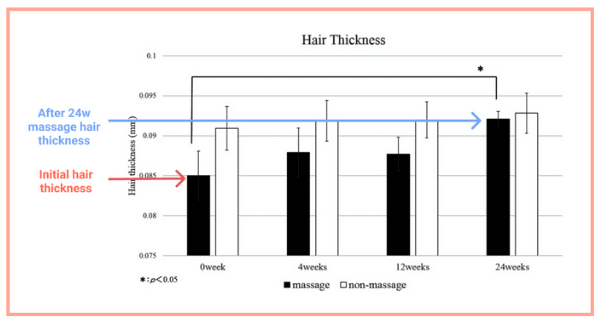
According to another research, %69 of 340 participants doing a twice-daily scalp massage of 11-20 minutes with mean adherence for 6 months reported hair loss stabilization or regrowth.
Thus, their ongoing alopecia has ended with a consistent scalp massage.
3- And finally, use better alternatives to relieve stress.
Researchers have found a direct correlation between hair loss and stress levels, so finding ways to minimize it is essential.
However, going for options such as smoking or consuming alcohol can backfire and cause more hair loss instead.
So, you should apply alternatives that also promote hair growth.
Here are such simple methods to relieve stress:
✅ Exercise: Putting physical stress reduces mental stress.
✅ Yoga: Yoga enhances the mood. It reduces both mental and physical stress.
✅ Spend time / connects with loved ones: It helps your body to release the natural stress reliever: Oxytocin.
✅ Pet: Playing/spending time with a pet also releases oxytocin.
✅ Deep breathing practice: Oxygenates your blood and keeps your focus on the present moment helping you forget.
✅ Write things down: It helps you remove stress reasons out of the mind.
✅ Reading a book: Books are new worlds that distract us from our daily stressors.
✅ Listening to music: Depending on your choices, you can easily become more optimistic about life.
And, of course, don’t forget about the negative habits to avoid:
❌ Reduce (or even stop entirely, if possible) smoking.
❌ Reduce alcohol consumption.
❌ Be gentle and careful when styling or combing your hair.
Overall, all these natural and everyday solutions will create a significant change.
However, as they can help only so far, some patients with more advanced hair loss will also need direct medical help:
When natural solutions take you only so far: Supplements that increase a hair transplant’s success.
For some patients, their hair loss has simply advanced so far that they require medications in addition to daily changes.
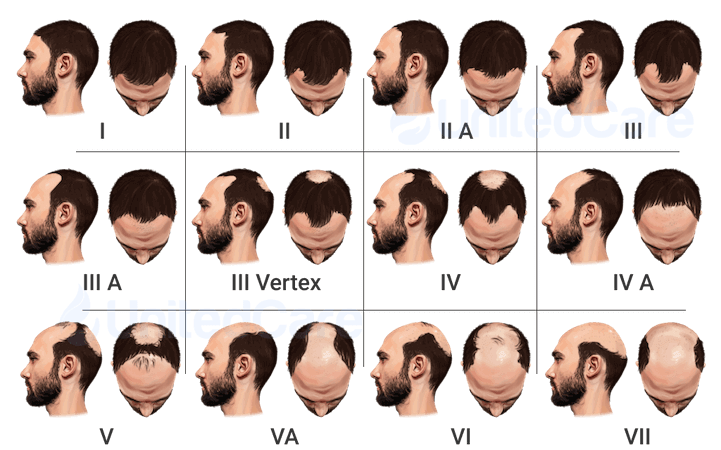
💠 As the Hamilton-Norwood Scale shows us, at some points, patients may experience extreme levels of thinning hair and shedding that natural options may not be enough to revert the process completely.
In this case, going for medications that fight the balding process can help immensely.
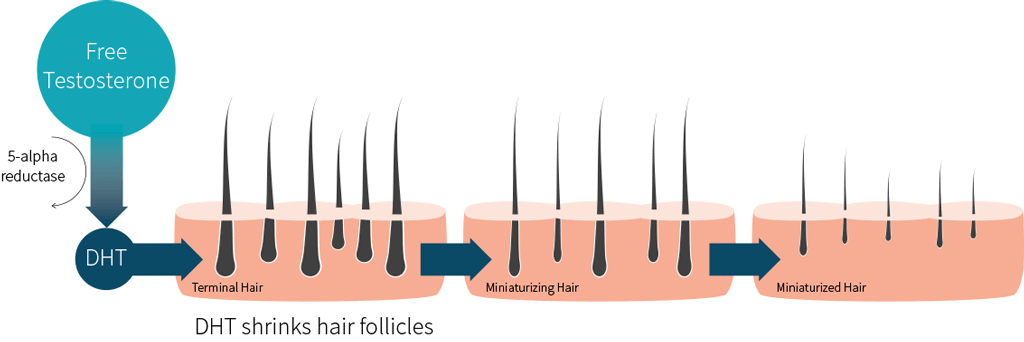
Every patient that experiences male pattern baldness (MPB) has a hazardous hormone called dihydrotestosterone (DHT).
Over time, DHT gradually shrinks your hair follicles and causes your hair to get thinner and fall out.
That is where the supplements come in because it is their job to either prevent the production of this hormone or at least slow it down:
1 – Finasteride is your best chance to fight DHT directly.
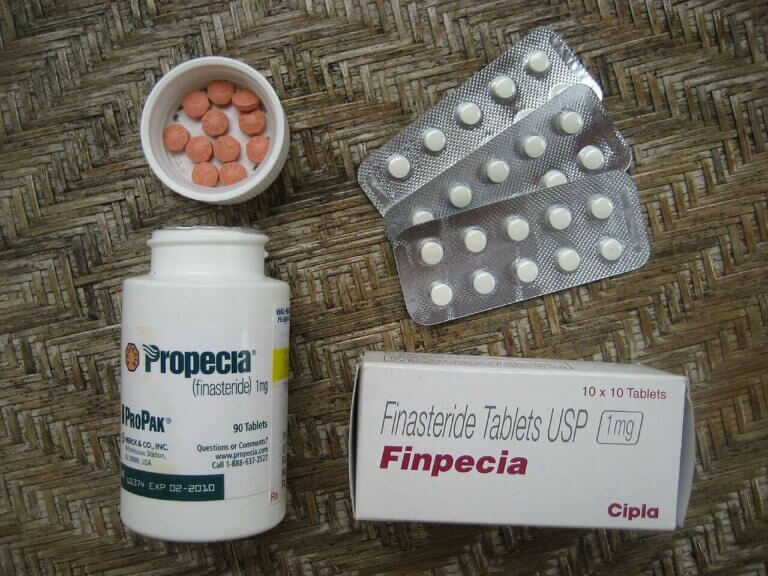
It directly prevents the production of the DHT hormone.
As an inhibitor medication (takes its name by inhibiting the production of DHT), it works by locating the producer enzymes of DHT and stopping them from working.
👉 Consequently, as your levels of DHT drop, it can no longer prevent your hair’s natural healing and regrowing phase. And thus, it directly helps your body regrow your hair in its natural cycle.
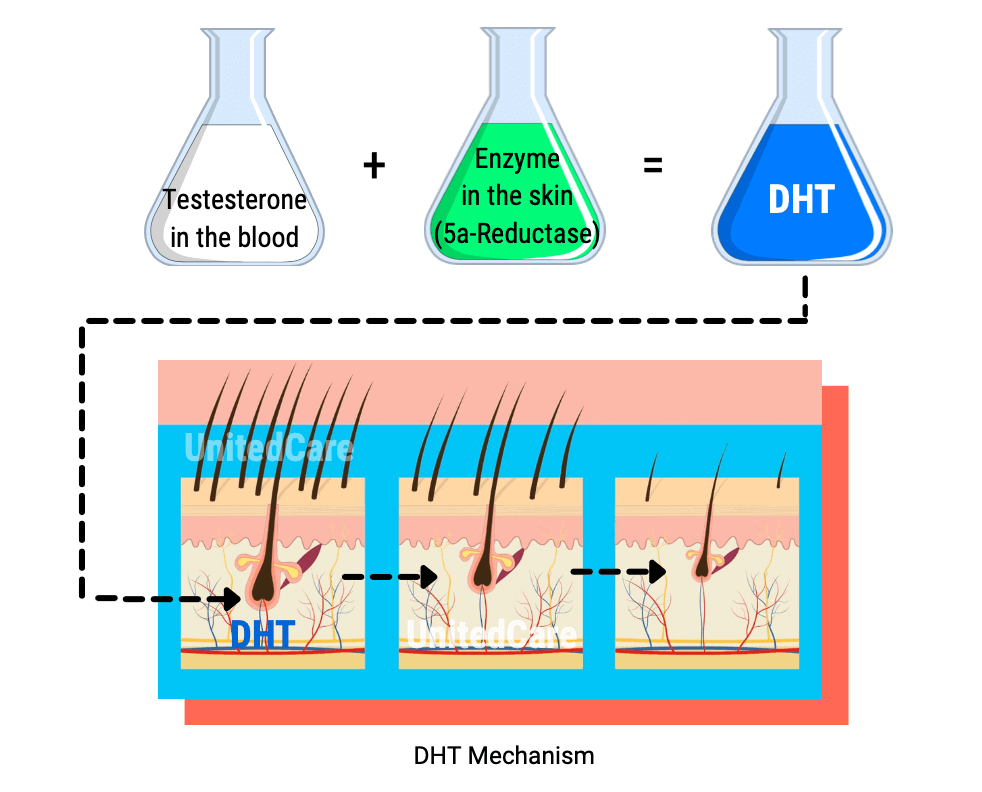
But that is not all Finasteride does.
Aside from helping you stop further hair loss, it helps by doing two things:
1️⃣ It thickens your thinning hair.
2️⃣ And it increases the success rate of your hair transplant.
However, as great as these are, they are not achieved overnight because Finasteride is NOT a one-time solution drug that you can use only once to have permanent results.
👉 To keep its effect, you must continue using it daily.
As supported by a study, I advise every patient to continue using Finasteride until a year after the surgery since it improves the results and dramatically boosts hair density and counts.
And to decide when to stop, you can stop whenever you wish and leave without any permanent damage because any rare side effect of Finasteride is entirely reversible. 🍀
To properly benefit from Finasteride, I advise using the oral Finasteride Propecia with 1 mg dosage once a day.
To prepare for your transplant, as supported by studies, I advise our patients to start using Finasteride as soon as possible and continue using it for a year following the hair restoration surgery.
Utkan Kızıltac, MD
This is the proper step-by-step way to use the oral version.
And as a medical doctor who has seen the effects of every different version of Finasteride over the years, I suggest this as it is the most effective one.
A global study focusing on the oral version’s effectiveness in supporting a hair transplant was made in 2005.
After using 1 mg of Finasteride daily, visible increases in frontal scalp hair after the transplant were recorded for 94% of patients.
Ultimately, Finasteride is an extremely effective, reliable, fact-checked, and prominent supplement that any doctor will confidently suggest.
👍 Of course, in any case, I would always recommend that you consult with your doctor beforehand to see if you are an eligible candidate for using it.
And speaking of which options you have if you find yourself ineligible for Finasteride:
2 – Minoxidil is your safest option for boosting your hair’s healing process.
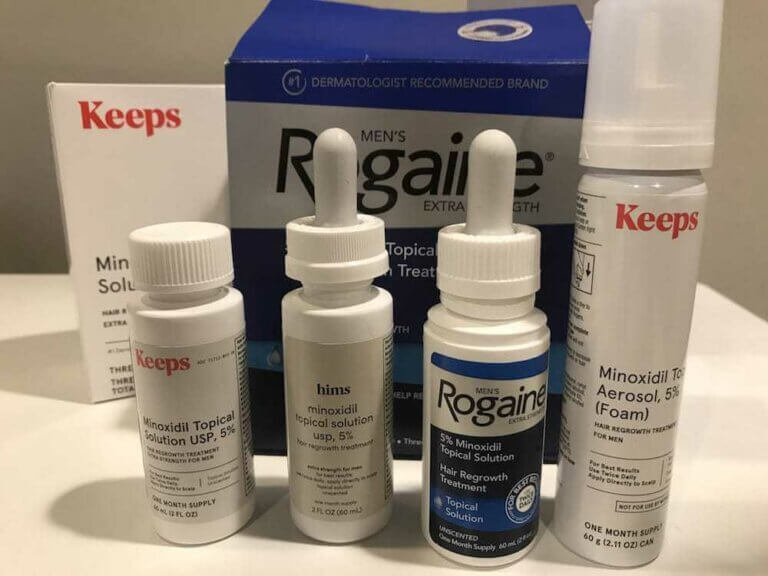
Minoxidil is the best FDA-approved option for treating male pattern baldness (MPB) for patients who do not and cannot use Finasteride.
That is because its working mechanism takes a more indirect approach.
To support your body’s natural hair-growing and replenishing process, Minoxidil increases the blood flow to your scalp.
As a vasodilator medication, Minoxidil widens your blood vessels and increases the overall blood flow. 🧪
When you apply it to your scalp, your blood vessels around the balding areas are widened, which in turn causes more blood containing oxygen and healthy nutrients to flow into your scalp. 🧼 This process feeds your follicles more, promoting a quicker growth of new, thicker, and healthier hair, which fights excessive balding you are experiencing by slowing or even completely stopping it. 🌱
By helping your hair promote this process, Minoxidil causes hair follicles’ to extend their healing and regrowing phase vastly.
And, of course, there is more because that is what we ask from these supplements:
Minoxidil also helps you replace thinning hair.
During MPB, most of your hair follicles start shrinking before shedding.
⚠️ This process can come to such a degree before falling out that your hair can look thinner and bald even before you start losing them.
To battle this, Minoxidil contains a certain type of nitric oxide moiety. 🧪
This is part of a molecule that can bind to nitric oxide and cause your hair follicles to shed and stimulate the growth of new follicles more quickly to start replacing shed hair with thicker hair.
And over time, your hair’s future will include more thickness thanks to Minoxidil.
To achieve that future, I advise the topical version of Minoxidil Rogaine 1 ml dosage to be applied on the scalp twice daily.
“To prepare for your transplant, as supported by studies, I advise our patients to start using Minoxidil as early as they see hair loss but stop using it 2-4 weeks before surgery.”
Utkan Kızıltac, MD
🔔 However, the phrase “over time” is the key here because, just like Finasteride, Minoxidil is NOT a one-time solution.
You must continue using it to maintain its benefits; those effects will not appear in a single day.
But as studies show, the results are exceedingly well:
According to research, %50 of 326 patients who used Minoxidil for two years grew their hair in a much denser thickness.
And all they had to was apply 1 ml of Minoxidil on their scalp twice daily.
💊 Ultimately, the field of dermatology is equipped with two great supplements to prepare you for a better transplant.
But the final and most influential move in preparing for a hair transplant lies in your own personal research:
3 – Vitamin C is always good.
Vitamin C, a vital nutrient known for its numerous health benefits, plays a pivotal role in supporting overall well-being. However, its significance is particularly emphasized when considering the period leading up to the hair transplant at UnitedCare.
I recommend my patients Vitamin C supplementation in the 7 days preceding the operation (pre-op). A dosage of 1000mg should be taken three times a day, amounting to a total daily intake of 3000mg is enough for a grown man.
This regimen is designed to bolster the immune system, reducing the risk of infections and complications during the surgery. Additionally, Vitamin C’s therapeutic properties extend to the post-operative phase, where it aids in tissue repair and accelerates the healing process.
Finding the right clinic to entrust your hair’s future is your only guarantee.
If you do not wish to find yourself scheduling another transplant in the future, you have to get your hair transplant done right.
To keep your full head of natural hair, you must first ensure everything goes according to the books during the surgical procedure. This is the crucial part of a pre-transplant phase: The researching part.
👉 Finding a reputable and experienced hair transplant clinic to entrust your future is your golden ticket.
There are some vital points you can use as criteria in your research:
1 – Make sure your chosen surgeon is right for the job.
First, you need to ensure you’re working with the right physician/surgeon who will operate on you.
How reliable are they?
What are their credentials?
Do they present their credentials on the clinic’s website?
And before anything else, they need to be a medical doctor in dermatology (the field focusing on skin and hair) and an experienced hair transplant surgeon with plenty of satisfied patients.
Preferably, I advise finding a dermatologist.
If you have any doubts, directly ask your surgeon.
And if they can answer your questions and soothe you while having a good record, you’re in good hands.
The same can be done and said for the clinic:
2 – Find a clinic that is worth your time and money.
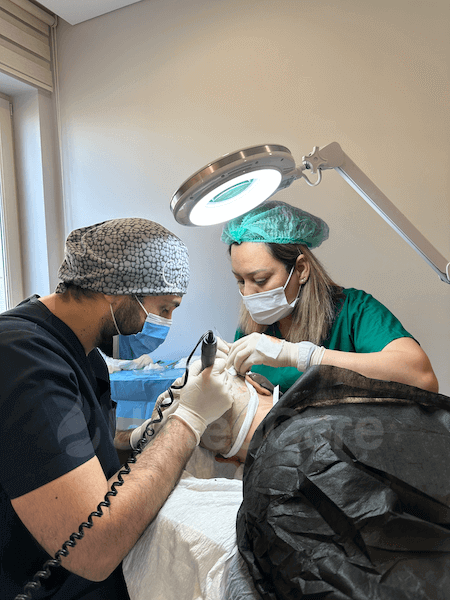
You must ensure you’re getting your surgery in the right clinic/hospital.
As someone who has seen many instances of both, I don’t need to tell you how to distinguish an “unhealthy-looking” clinic from your above-average quality clinic.
👉 The operating room and the whole clinic should look sterile, the equipment should be up to date, and the clinic rooms should be the same as the images you provided.
If they mislead you on one topic, they will likely do it on another, so watch out.
So, seeing how open the clinic is to communication is a crucial factor, which brings us to our last part:
3 – The right clinic will try to inform you about every concern before you can even ask.
To ensure you are in the right hands, ensure you’re getting all the information you need to make the necessary changes before and after a hair transplant.
In this aspect, looking for a clinic with specific additional tools on its website can help:
➡️ If a clinic has a proper customer care specialist that takes care of all your needs and questions before you even schedule surgery can change a lot.
➡️ If the clinic can also provide you with a one-to-one meeting with your hair transplant specialist before surgery, this can help you sound your concerns, assess the eligibility of your hair to set realistic expectations, and ensure you are on the same page.
➡️ Lastly, having available and accessible instructions about what patients should look out for in the pre-surgery and post-surgery makes all the difference.
That way, patients can know what their diet contains and restrict or which medications they should use and how.
In fact, to make the entire process even much easier, in our clinic, we use a care assistant bot to do all of these at once in an easy-to-use and practical manner:
We use our care assistant bot to wrap up all the vital instructions we have provided in this article and the others.
It is the easiest way to follow pre-operative and post-operative hair transplant instructions.
💪 It works by entering a future date for your possible hair transplant. And depending on how much time there is, the care assistant tells you which activities to avoid, which medications to use, and which diet to follow.
You no longer have to search the entire internet looking for the answers; we brought them right to you:
At UnitedCare, we do the research for you and present it together.
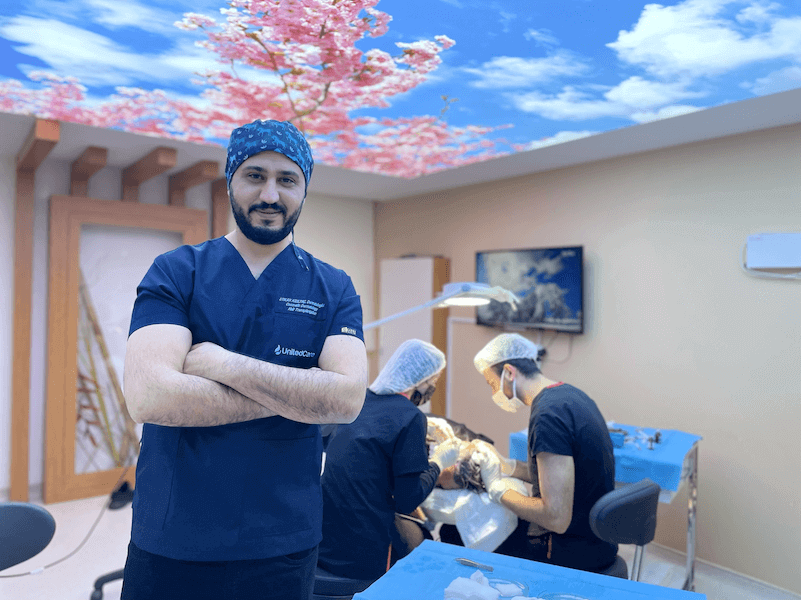
At UnitedCare, we begin your hair transplant process by offering you a free one-on-one consultation with our expert doctors to determine your suitability.
💊 If suitable, our holistic approach provides advanced technologies and bio-enhancements to ensure you do not need another surgery.
Once you have decided on a method, we begin the treatment with the utmost attention. 💉
But most importantly, we stay in contact with our patients even long after the surgery, ensuring that your transplant becomes permanent. 🍀
Affordable hair transplant costs, a holistic approach, and experienced dermatologists on-site are here to provide you with the right solution.
Ready to begin the journey? Click here to start the first step with a free consultation.
